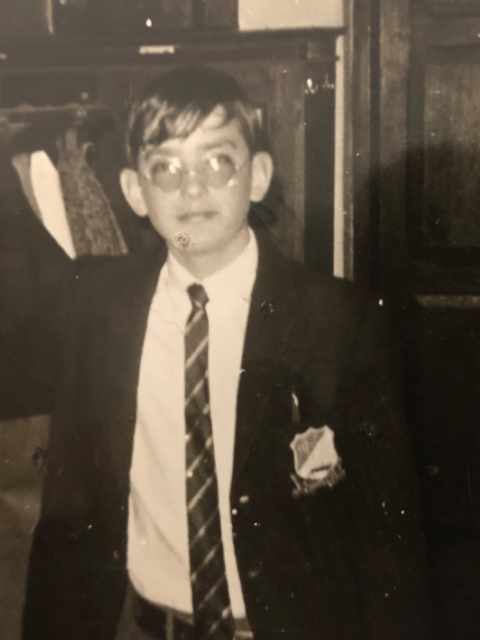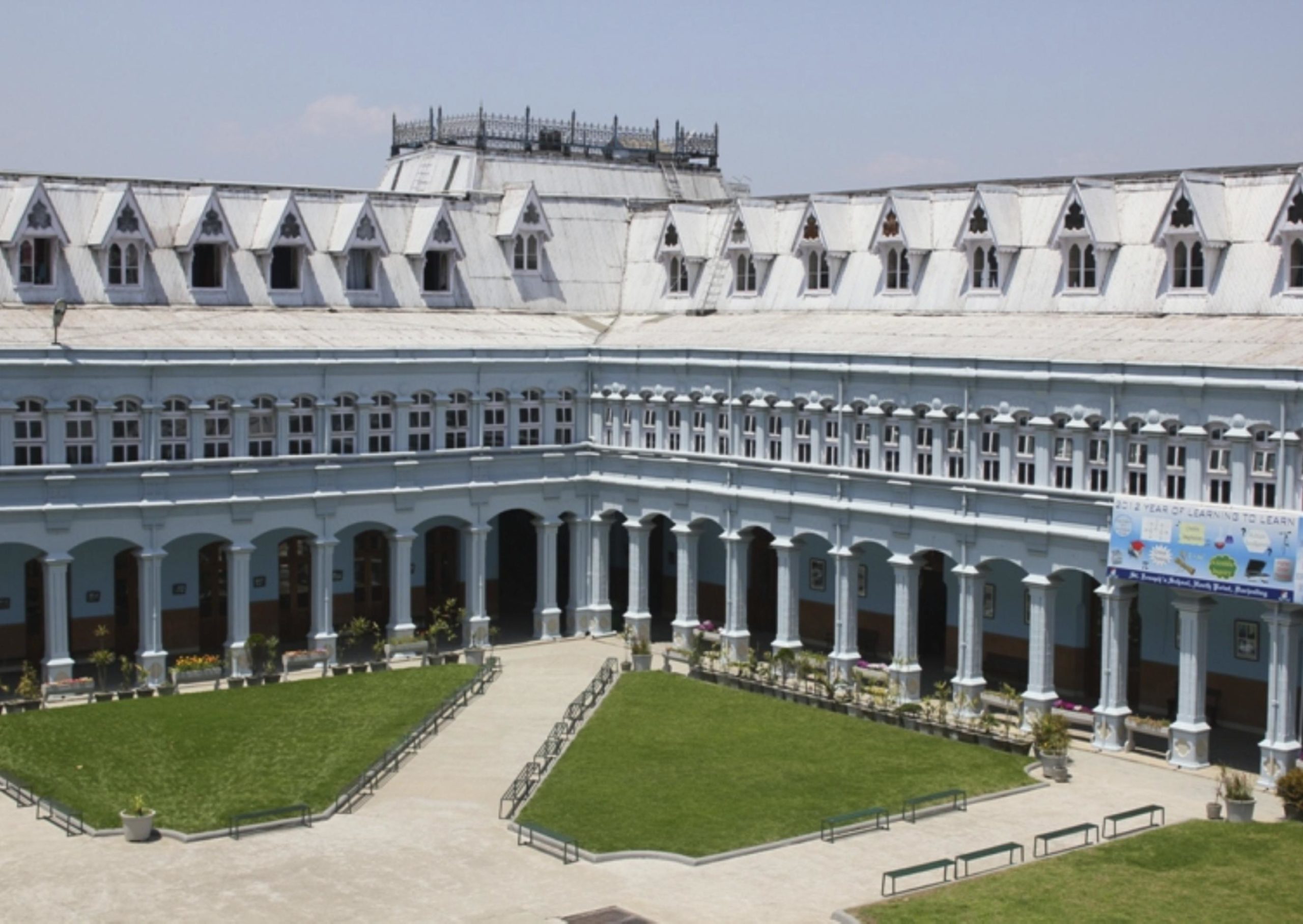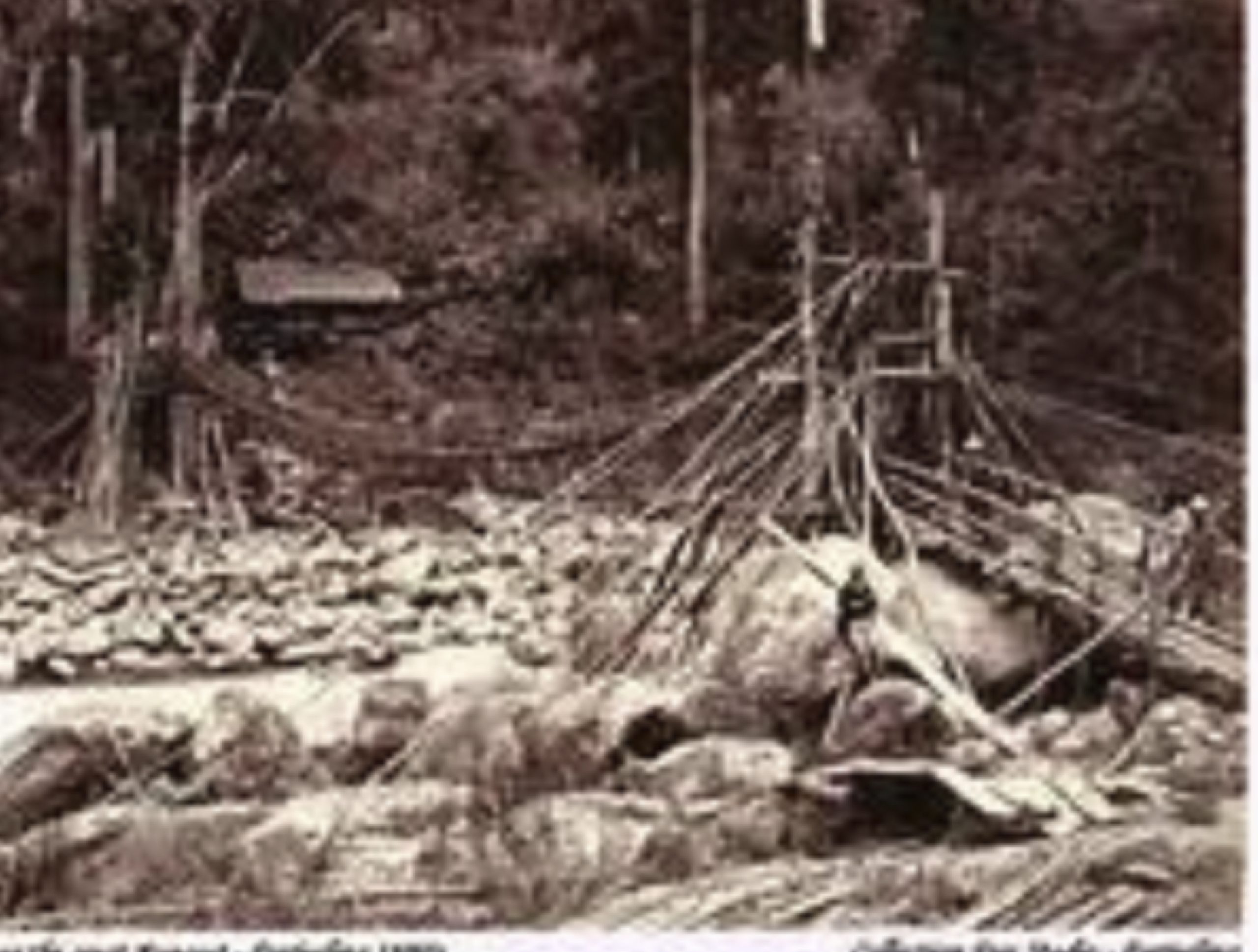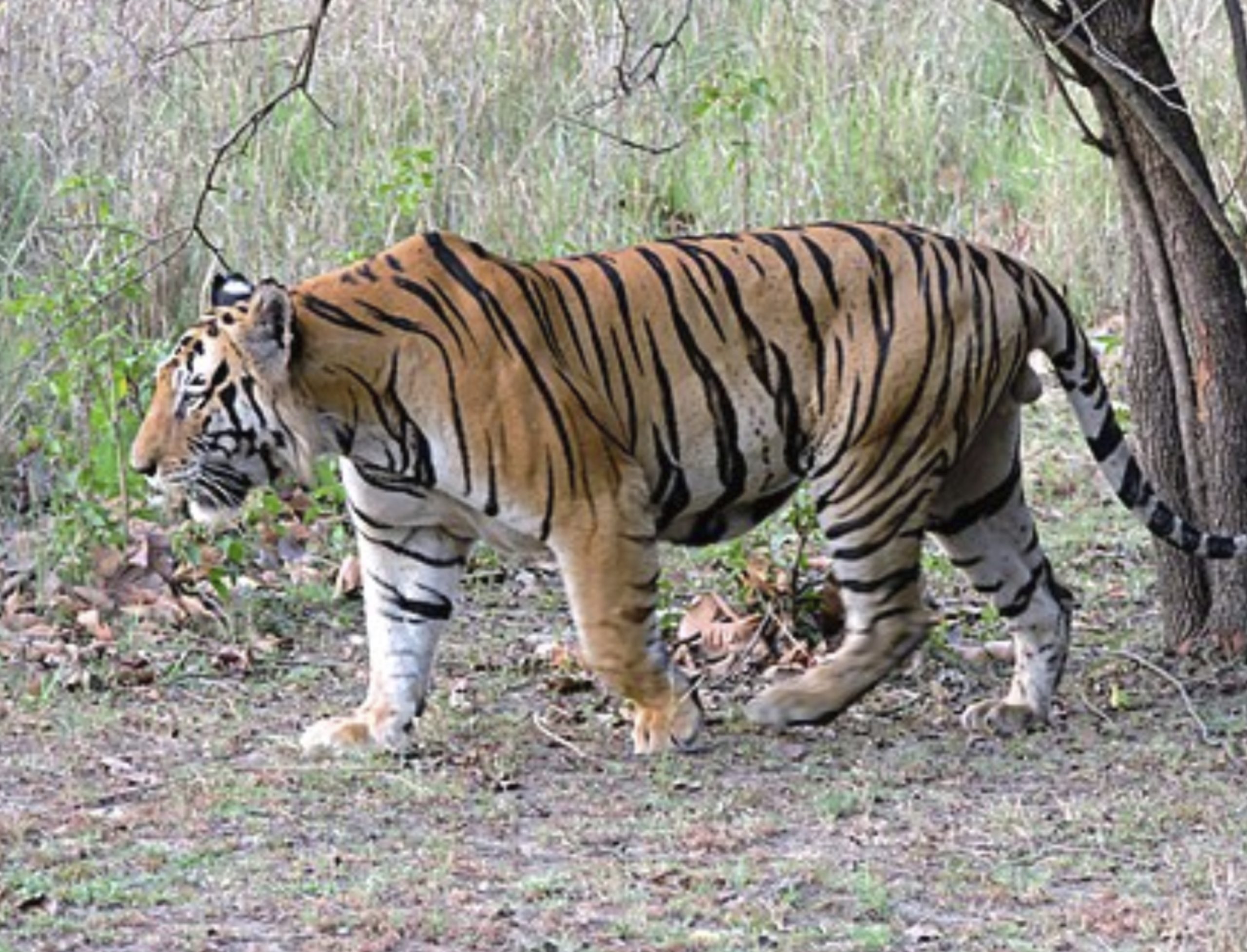Tigers of West Begal
Strap in, dear, Dear Readers… the Tigers of West Bengal are close at hand…
Because I’d like to share with you a true tale about the most terrifying 5 minutes of my life… and the Tigers of West Bengal!
After the radio interview last week at WHUP in Hillsboro, North Carolina with the atmospherically fantastic Triangle Slim, the true tale ought to come out!
And it begins with the fact that I was in a boarding school for a number of years. A number of years on the roof of the world. In a place so remote, so unique, and so unlike anything I could have imagined, that it’s still like a dream.
Imagine a scene right out of Great Expectations: a very dark, very wide, and very old creaking staircase that leads me up to the second floor where the porters deposit me, my box, and a few suitcases. I am at the end of a 6-hour ride in a land rover up from Bagdogra on the plains in West Bengal, about 200 miles north of Calcutta. We head up steep hills that get progressively higher until my ears pop.
By the time we arrive, it is dark, I have no idea where I am because I can’t see anything, and no one speaks English.
I am standing all alone on a highly polished marble floor at the end of a long, long corridor with 75 small white sinks lining the left side of the dark hall and there are just a few doors on the right, opposite the sinks. It’s around 10 at night and I have just been deposited on the 2nd floor of my new school. I am 12 years old. Tigers of West Bengal are the farthest thing on my mind…
St. Joseph’s College, North Point, Darjeeling, West Bengal, India.
I am standing there, alone in the dark, with my bags, and a Sitar I just bought in Calcutta, laid out around me. It reminds me of a poem by Walter De La Mere titled “The Listeners“, and one I would recite two years hence and win the North Point Poetry Prize and a Pink Slip, that the Jesuit Father’s of North Point use to indicate their approval.
Beware the Yellow Slip – you’ve done something wrong, as I will find out in the coming days, and you are sent down to the Prefect’s Office off the Quad where you’ll get 4-6 slaps on your open palms with a 12″ leather strap – it’s about 1/4″ thick, too, so it hurts like crazy; you hold back the tears, and when you get out of the office, you press your hands against the cold marble walls… it helps, but not much. Your hands tingle for an hour.
The main thing is not to be crying when you get back into Study Hall, because everyone knows what happened and they’re all watching you as walk back to your desk.
There’s a full Himalayan moon out, and it’s pouring white silver into the pitch-black hallway. I know I am on the second floor and it is right out of Charles Dickens: old, the wood is old, the walls and doors are dark, old wood and it all smells old, not unlike decay. I made my way a few steps to my left across the hall to the tall windows above the sinks and I looked down into a perfect rectangle, clearly visible in the moonlight. It’s the Quadrangle, bathed in silver-white light and the walk paths that run across the Quad and run diagonally from corner to corner are tightly trimmed and perfectly straight. The walkways are laid out in the form of a Union Jack.
Which makes sense since the school was created by the British East India Company in 1860 or so, and it is right out of a John Masters book “Bhowani Junction” or “Nightrunners of Bengal”. Tigers of West Bengal…
Fast forward three years.
I am in the Upper Division now, so no more short pants and House Ties, and I get to wear Blazers and Greys on Saturday afternoon when there are visiting hours, and because I hit the ball like a baseball I am now one of the best batsmen on the Cricket Team, behind my classmate V.J. Gupta who will go on in 15 years to be one of the greatest batsmen and fielders in the India and British Cricket Test Match Series.
Every year the Upper Division gets to hike down the mountains – on foot – to the Rangeet River, a raging torrent of Himalayan Glacier runoff water that forms the boundary between India and Sikkim – and camp out for a few days. Things are always a little tense at the borders, so we can’t go over the rickety rope bridge into Sikkim, although my classmates are members of the Royal Family from the Emerald Lodge in Gangtok.
This year, we headed out in the morning around 6 am – we take the “O” Scale train about four hours to the little Hill Station in one of the many Tea Plantations covering the Himalayan foothills, and we stay overnight at a house the School uses for such purposes. In the morning breakfast is paper-thin omelets, just like we get every morning at school, gallons of tea with Cadbury’s evaporated milk, and for the Tibetan boys, they put out large (really, really hot) green peppers, hunks of bread, and saucers of butter.
And we’re off.
It takes around 5 hours to hike down to the School Campsite, almost a straight verticle drop down to the river from 10,000 feet, and it is very easy to miss the trail and get lost for hours in the plantations. It happened to me two years earlier and I was lost for hours into the evening.
It is a glorious, bright, sunny day, but chilly: it’s always a little chilly in the Darjeeling District until you get farther down the trail and significantly lower in elevation. From where we started you can look directly across the hills and plantations into China and Nepal, and you can see the Annapurna Massif, Kanchenjunga and some of the lesser peaks in the ridge, all part of the entire Himalayan Range, running across the roof of the world.
Except for Mt. Everest. You need to get a few hours farther West to really see Everest – near Tiger Hill or Sundukphu.
But from where I am, everything appears so close you can touch it; you can see the snow trailing in a 20-mile plume off the top of Annapurna Massif, and it trails off the top pure as white snow against a deep, dark blue sky at the edge of the atmosphere. This is truly on the roof of the world.
I have been hiking away for hours, and it is now warm, and the sun is beating down between the trees and branches that fold over and slightly cover the trail which has been gradually changing, and now has leveled out as it runs through the edges of the last Tea Plantation before the Rangeet River. I am alone, the rest of the boys who started with me have all raced ahead long ago, anxious to get into the water at the Camp.
The trail takes a hard right turn away from the ridge I have been hiking down and heads straight for the River about 1000 yards ahead. It takes another turn about 500 yeards in front of me where it opens up into the last Plantation field. I can hear the boys in the water, still far off, but they’re splashing and yelling, calling to each other, and I am close.
I turn onto the last 500 yards of the Trail.
In a few minutes I am half-way down it, and for some reason, I slow down. The sounds from the River are gone and it is completely silent. There isn’t a breeze, not a breath of air moving anywhere and not a leaf fluttering. The sun is pouring through the top canopy and it becomes very hot. Something is wrong and I can feel it.
Walking slowly on, walking until I am about 20 feet from a thick wall of bamboo, marking the end of the trail, which opens up to the right onto the Tea Plantation… I come to a dead stop. It is too quiet, and the sun is too hot.
I slowly turn to my left, and I am about 2, maybe 3 feet from the bamboo curtain that has been running along the sides of the now considerably narrow trail – I hadn’t noticed how narrow it had become. I look just a bit to my left and I see it, just behind the bamboo:
It is a tail, black, and orange, very still.
My eyes pan to the right, following the stripes in the tail as they turn into large black and orange stripes and then into very large stripes and then I am looking straight ahead and there, not 18 inches away from my face and looking right back at me is the large, very much alive head of the biggest animal I have ever seen. I know what it is immediately: a Bengal Tiger.
I cannot move – I am frozen. I can feel the heat, like an oven door opening, and smell the blast of breath from this Bengal Tiger that’s now full-force on my face; it’s like a dogs breath but much more of it and slobbery and sickly wet.
We are there, eyes locked, looking at each other.
I am alone. I am completely defenseless. I am so far from anywhere no one would be able to help. I am at the mercy of this cat, one of the largest and most aggressive man-eaters on the planet. I run over all kinds of scenarios in my mind, but they all end in my death. Death by Bengal Tiger.
And we all know about them, heard the stories and been warned by Father Forestall, the Prefect. Just my Bad luck today…
Sound returns, barely, and I can hear the tea pickers working the rows behind me.
Then there is a small whimper, from farther into the brush, like a hungry kitten… and the face in front of me slowly opens its mouth, wider and wider until I can see the gums and back incisors and I can feel the hot breath now more heated and the permeating calm is very pronounced.
It’s a mother, and this cat is getting ready to strike.
The roar that follows is loud and bone chilling, followed by another one that is even louder and more snarly and aggressive.
I turned and went from a standing stop to moving as fast as I had ever moved. The Gods were with me that day and I went running out of the jungle, running down the tea rows, running down past the tea pickers who are now screaming because they heard that roar too, and past the Plantation’s watchmen who are galloping up the road to my right, heading towards me, rifles out…
I didn’t stop until I made it to the Camp, and was in the middle of my classmates, surrounded by them, safe, with all my limbs intact. They are wondering what all the commotion was, as they can still hear the Land Rovers’ engines gunning up at the Plantation, and hollars in excited Hindi of “Juldee Lao, Juldee Lao”!
I couldn’t even begin to explain. Could you?
About the Author
“If there’s a place for musical perfection, it’s wherever you’ll find Eric Sommer – A blistering acoustic style plus a variety of slide and open tuning formats will knock you for a loop…” wrote Studdie Burns, New Melody Maker/UK in 2013. “How one guy can do this so well is remarkable, but if you look a little deeper there’s a batch of road miles around this lad… and it all makes sense.”
Eric started his musical career in the Boston area under the eye of legendary promoter Don Law and was onstage at The Paradise Theatre in Boston for a record 40 appearances. He has been a regular player on many national and international tours and showcases, and worked in Europe for two years with Nick Lowe and acts Bram Tchaikovsky and Wreckless Eric; during this period Eric worked on Danish, German and British rock stages, returned to Boston and formed The Atomics.
As a founding member of Boston’s legendary pop/new wave cult trio “The Atomics”, who toured non-stop with Mission of Burma, Gang of Four and The Dead Kennedy’s and were on the leading edge of several musical transformations, Eric never lost sight of his acoustic roots, returning to his heroes and mentors often: David Bromberg, Steve Howe(YES), Duane Allman (Allman Bros.), Bert Jansch, Davy Graham, Robert Johnson. Mr. Sommer’s current project with power trio “The Solar Flares” shake up Chet Atkins and David Bromberg’s influences with those of Randy Travis and British Rocker Elvis Costello – a remarkable mix.
And to keep track of it all, Eric started keeping notes, which evolved from napkin scribbles to paper and pen efforts, writing stories, making poetry and capturing the roads and bridges as they went by, plus people, places and… more people which become his notes, then become characters for songs, stories, and prose.
Eric currently has four volumes of verse, 5 studio albums, a LIVE in AUSTIN DVD as well as an electronica project titled “The Smallest Particle” and more on the way… this blog is an attempt to keep track of it all…
Amen.
_________________________________
You can reach Eric directly at ericATericsommer.com and see more of his projects here on this website. Red Chairs, Black Pancake and Blue Turtle are all available here, as well as all current releases. Please share and comment below.








-

Singer/songwriter Eric Sommer is an unbelievable intersection of improbable influences and experiences channeled into an amazingly diverse catalog and a résumé that reads more like a musical adventure novel than a series of career bullet points.














